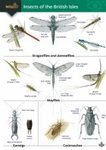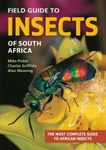About this book
A unique and critical analysis of the wealth of research conducted on the biology, biochemistry and chemical ecology of the rapidly growing field of insect cuticular hydrocarbons. Authored by leading experts in their respective fields, the twenty chapters show the complexity that has been discovered in the nature and role of hydrocarbons in entomology.
The book covers, in great depth, aspects of chemistry (structures, qualitative and quantitative analysis), biochemistry (biosynthesis, molecular biology, genetics, evolution), physiology, taxonomy, and ecology. Clearly presents to the reader the array of data, ideas, insights and historical disagreements that have been accumulated during the past half century. An emphasis is placed on the role of insect hydrocarbons in chemical communication, especially among the social insects. Includes the first review on the chemical synthesis of insect hydrocarbons.
Contents
Part 1. Chemistry, Biochemistry and Physiology: 1. Introduction: History and overview of insect hydrocarbons Gary J. Blomquist and Anne-Genevieve Bagneres; 2. Structure and analysis of insect hydrocarbons Gary J. Blomquist; 3. Biosynthesis of cuticular hydrocarbon Gary J. Blomquist; 4. Molecular biology and genetics of hydrocarbon production Claude Wicker-Thomas and Thomas Chertemps; 5. Site of synthesis, mechanism of transport and selective deposition of hydrocarbons Anne-Genevieve Bagneres and Gary J. Blomquist; 6. Cuticular and water balance Allen Gibbs and Subhash Rajpurohit; 7. Chemical taxonomy with hydrocarbons Anne-Genevieve Bagneres and Claude Wicker-Thomas; 8. Chemical synthesis of insect cuticular hydrocarbons Jocelyn Millar; 9. Oxygenated derivatives of hydrocarbons James S. Buckner; Part II. Chemical Communication: 10. Perception and olfaction of cuticular compounds Mamiko Ozaki and Ayako Wada-Katsumata; 11. Nestmate recognition in social insects and the role of hydrocarbons. Jelle S. van Zweden and Patrizia d'Ettorre; 12. Cuticular hydrocarbon cues in the formation and maintenance of insect social groups Michael Green; 13. Hydrocarbon profiles indicate fertility and dominance status in ant, bee, and wasp colonies Juergen Liebig; 14. Chemical deception/mimicry using cuticular hydrocarbons Anne-Genevieve Bagneres and Cristina Lorenzi; 15. Behavioral and evolutionary roles of cuticular hydrocarbons in Diptera Jean-Francois Ferveur and Matthew Cobb; 16. Contact recognition pheromones in scorpions and spiders Marie Trabalon and Anne-Genevieve Bagneres; 17. Hydrocarbons as contact pheromones of longhorned beetles Matthew D. Ginzel; 18. Polyene hydrocarbons, epoxides, and related compounds as components of lepidopteran pheromone blends Jocelyn Millar; 19. Volatile hydrocarbon pheromones from beetles Robert Bartelt; 20. New areas of research on insect hydrocarbons and conclusion Abraham Hefetz, Claude Wicker-Thomas and Anne-Genevieve Bagneres.
Customer Reviews
Biography
Gary J. Blomquist is the chair of the Department of Biochemistry and Molecular Biology at the University of Nevada, Reno. He has published over 200 original research papers, reviews, chapters and books, including co-editing the books Pheromone Biochemistry and Molecular Biology (G. J. Blomquist and R. G. Vogt, Elsevier Academic Press, 2003) and Pheromone Biochemistry (G. D. Prestwich and G. J. Blomquist, Academic Press, 1987). His work has been cited over 4500 times (ISI). Much of Blomquist's research career has involved the study of insect hydrocarbons with an emphasis on their biosynthesis, endocrine regulation and chemical analyses. He published his first paper on insect hydrocarbons 40 years ago (1969) and has remained active in this field, collaborating with many of the early leaders in the field including Larry Jackson, Dennis Nelson, Ralph Howard, Coby Schal and Anne-Genevieve Bagneres. Anne-Genevieve Bagneres is Director of Research at the C.N.R.S. and team leader at the Institut de Recherche sur la Biologie de l'Insecte (IRBI) in Tours, France. She completed a PhD on the role of cuticular hydrocarbons in social insects at the University of Paris 6 in 1989, and received the Chancellerie of the Universities of Paris Prize for her PhD work. She spent a year of postdoctoral studies in David Morgan's laboratory in 1990, and a sabbatical in 1996-97 in the laboratories of Gary Blomquist and Coby Schal. A-GB is primarily interested in chemical ecology of social insects where she continues to be a leading contributor and proponent of the concept of chemical signature. While her primary research focuses on termites, she participates in several collaborative studies involving chemistry of other insects. She is an active member of the International Society of Chemical Ecology (ISCE) and the bureau of the French section of the International Union for the Study of Social Insects. She has published nearly 100 original research papers, reviews and chapters.



































